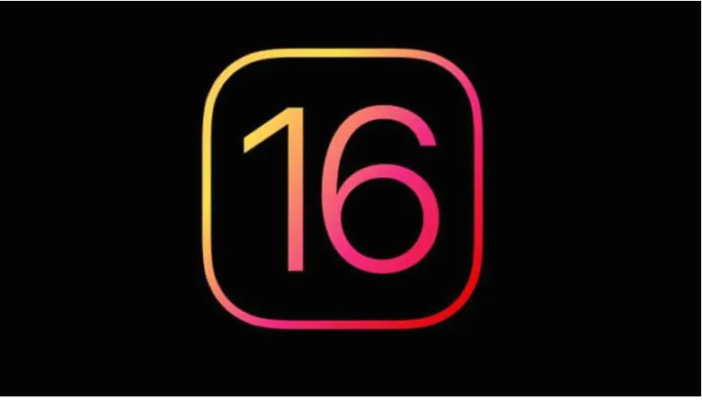Even if iOS 15 has just come out (September 14, 2021) and has been made immediately available on the new line of iPhones, it is not too early to look to the future: today we are talking about iOS 16 .
Android 12 also came out recently (October 4, 2021), although the update via OTA did not arrive in the early hours. The reason for this delay is due to Google’s desire not to reveal all the Pixel exclusives , but to keep them confidential until the Pixel 6 launch, which is then set for October 19th.
In any case, Android 12 brings some very interesting news that substantially change the operating system. In fact, Apple could learn a thing or two from Android 12, and perhaps it would be appropriate to bring these features to their next big update to the mobile operating system, iOS 16 on the iPhone 14 .
Apple’s iOS 16 release date will most likely be September 2022 . In fact, Apple’s recent launch program plans to release revisions of the operating system during the same period every year.
1. Customization of the interface
One of the biggest news of Android 12 is the Material You , the evolved form of the famous Material Design . Basically, Material You allows you to customize your phone to your taste , right down to the color of the interface.
Since iOS 14 allowed you to change your app icons via the Shortcuts app and add widgets to the Home screen , I’ve become a fan of the most streamlined and minimal personalization for iOS. This step may not have been fully learned and fully embraced with iOS 15, but perhaps something will change with iOS 16.
For the uninitiated, the Material You lets you choose a custom color palette to use at the system level , so you can basically change the interface colors.
There is also a color extraction tool that can locate colors from the current background and apply them to the entire UI of the device. There are also new animations , transitions and other interface changes that are much more adaptable and dynamic for maximized energy efficiency.
It would be interesting to see this level of customization applied, at some point, even in iOS, allowing us to change the color of the lock screen text to something other than black or white.
They might interest you
DuckDuckGo android privacy browser
DuckDuckGo: The browser that REALLY protects your privacy on Android
android 12 google pixel connection problems
Connection problems after updating to Android 12? How to fix in 3 seconds
Android 12 privacy settings
Android 12 puts your privacy at risk! 3 settings to change immediately
android malware app
12 Android apps to delete NOW: these are dangerous malware
Imagine being able to choose a contrasting color to match the one you chose as your background. Adding new animations and transitions when switching between apps would also be a simple, but pleasant, novelty. These are quite substantial changes, but it’s one area where Apple should take a cue from Android 12.
2. Privacy dashboard with microphone and camera controls
This feature is a bit surprising, being Google (have you read the article explaining that Google logs what you do? ), But Android 12 has a new Privacy Dashboard . This single screen will show you all your permission settings and what data is currently accessible by which apps and how often over the past 24 hours.
If you don’t like an app using certain data, you can revoke permissions from this dashboard at any time.
While you are in control of your privacy settings on iOS, it’s not super easy to reach and you definitely don’t have everything on one screen.
Viewing the Android 12 timeline with the privacy dashboard seems like a more intuitive way to view this information at a glance and make changes as you see fit. Apple should learn and improve it in the next version of iOS 16.
concept ios16 apple 780×408 1
Staying on the subject of privacy, Android 12 also adds a quick switch to disable access to the camera or microphone at the system level in Quick Settings.
This overrides any previously granted access in the apps. If Apple could add something similar to the Control Center , it would be greatly appreciated for those who particularly care about privacy.
3. Quick Settings, maybe even integrated into Control Center
Android 12 has improved Quick Settings , which are still accessible from the notification panel. Changes include switching from circular icons to rounded rectangles which display more information and have become easier to touch, match the color scheme and you can change what you see and the order in which they appear .
Now there are also controls for Google Pay and Home.
It wouldn’t hurt if Apple added a faster and more efficient way to tweak some settings, similar to how Android has been doing it for a long time. For example, I would like to be able to choose between 5G On, 5G Auto or LTE directly from the Control Center.
Apple already allows you to quickly access certain things, like Wi-Fi networks and Bluetooth devices from Control Center. But iOS locks you out of other shortcuts that would be equally useful, like cellular data, by letting you access the Settings app to change those particular options.
I mean, Apple almost made it: I’d like to see just a little more consistency and that’s it.
4. Scrolling screenshot on iOS 16
While other phone makers like Samsung and OnePlus already have this feature, Android 12 offers scrolling screens for all Android users . What is a scrollable screenshot?
Basically it is the possibility, during a screenshot, to go beyond what is visible on the screen and capture the entire web page.
On Android, this is done by taking the keys to take a screenshot as you normally would, then simply tapping the “Capture More” button . You will get a markup screen that will allow you to go beyond what was just shown on the screen.
If you’re the type of person who frequently uses the screen to take screenshots to share with friends and family, you know how important it would be to have this feature on iOS as well. Often you are forced to take multiple screenshots of different sections of a page when a scrolling screen would be enough to capture the entire content.
It is true that there are third-party apps that could solve the problem, but seeing it integrated natively would be another story altogether . Maybe iOS 16 might be the right time – fingers crossed.
5. Improve automatic rotation
Since smartphones were introduced, automatic rotation has been determined by the device’s accelerometer. With the accelerometer, the phone detects when the phone is in landscape orientation and then flips the screen accordingly to fit.
But the problem is that sometimes you are lying on your side and holding the phone in your hand, and this will automatically rotate, making it difficult to use the phone.
Android 12 is now adding face detection for automatic rotation , and this is a feature that is long overdue for iOS as well.
With face detection for automatic rotation, the front camera will search for your face and rotate the screen only if your face has changed orientation.
Honestly, this is one of the main reasons I’ve kept rotation lock on my iPhones since the option was made available because I hated the way it always rotated whenever I lay on my side.
If Apple added face detection for automatic rotation , I’m sure I could leave rotation lock off and I wouldn’t be the only one I guess. Hopefully, this feature can also be added to iOS 16.





